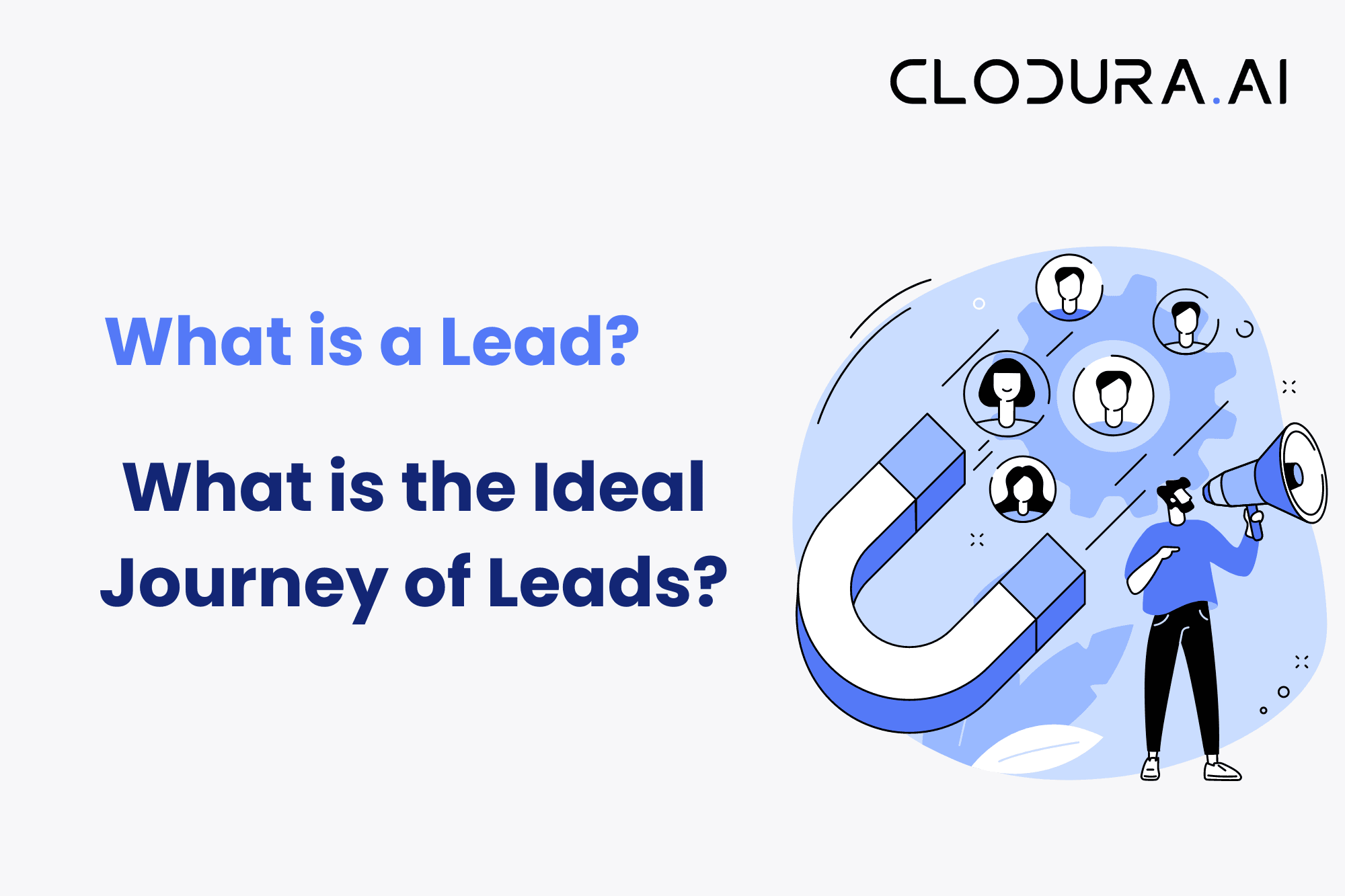What is a Lead? What is the Ideal Journey of Leads?
Qualified leads form an integral part of successful and sustainable businesses. However, at times sales and marketing teams across the industries often struggle with the exact definition of a lead. Despite so many discussions around the exact definition of a lead, it remains complicated and unclear.
Let’s free it from this complication by understanding it from two different angles: CRM and sales.
A Lead in CRM
A lead in CRM can be anybody in your Universe. From a CRM perspective, anyone who is a good prospect or could be a good prospect is considered a lead.
For example, you intend to target the VP of sales from IT ITES companies in India and the US, and you have a list of 50,000 contacts who match your profile of an ideal customer. These 50,000 contacts may or may not require your product, but still, they all become leads in your CRM because they match your profile of an ideal customer.
When you approach these individuals, and any one of them gives you an appointment, they automatically become your contacts whose accounts are then created in the CRM.
A Lead in Sales
A definition of a lead from the sales perspective is slightly different from the CRM in the sense that not everyone in your Universe is a lead for the sales team. For sales executives, a lead is someone who has given them a meeting. And, a meeting from the point of view of sales is a contact in the CRM.
As we have defined the concept of a lead quite clearly, it would be interesting to know what journey a lead needs to take to become a satisfied and loyal customer. Let’s have a look at this journey.
What is the Ideal Journey of Leads?
● Attraction
The first step of this ideal lead journey starts with an “attraction” for your product or service. Creating smart and interest-eliciting content is the surest way to attract leads to your product or service. Your content needs to be in a form that communicates your services, mission, and vision. Social media, blogs, and emails are some of the means this content can be disseminated effectively and easily. This makes leads reach out to you with questions, curiosity, and interest.
● Persuasion
The second step of the ideal lead journey includes persuasion. During this phase, you need to keep the leads engaged in your product or service as they have already asked you questions and spent some significant time on your landing page or website. You can keep them interested in your product via consistent and regular communication.
One of the ways to do this is to create forms where they are prompted to share more about their expectations and needs. You can also offer demos, free consultation, discounts, or offers to gauge their interest. Based on this information, you can create personalized email marketing campaigns, additional in-depth content, or organize webinars to persuade the lead to buy your product.
● Conversion
The conversion phase involves leads showing high interest in purchasing your product. It is a very delicate phase between the actual purchase and the high interest and intention to make that purchase. You still need to keep your leads engaged in your product by exactly showing them their pain points and how your product can solve them seamlessly. This can be done by creating easy-to-execute call-to-action buttons.
It is also important to provide them with a better customer experience during this phase so that they become your brand advocates and remain open to your retention, upselling, and cross-selling activities.
● Closing the Deal
Finally, a lead makes that much-awaited purchase and becomes your loyal customer in this phase. It is during this phase the monetary transaction happens. Providing the customers with a seamless payment gateway and timely delivery of your product goes a long way to create a solid legacy of loyal customers.
● After-sales Support
A lead may have completed the ideal journey, but, after-sales is the phase when the real journey begins. It is in this phase that your product has to prove its worth and convince the buyer that it was the perfect decision to buy your product.
This can be achieved by providing spot-on after-sales services such as technical support and monitoring where required, asking for feedback, and prompt responses from your customer care department.
As the entire sales process revolves around quality leads, knowing what a lead is and its ideal journey can help sales executives close more deals faster and better.

